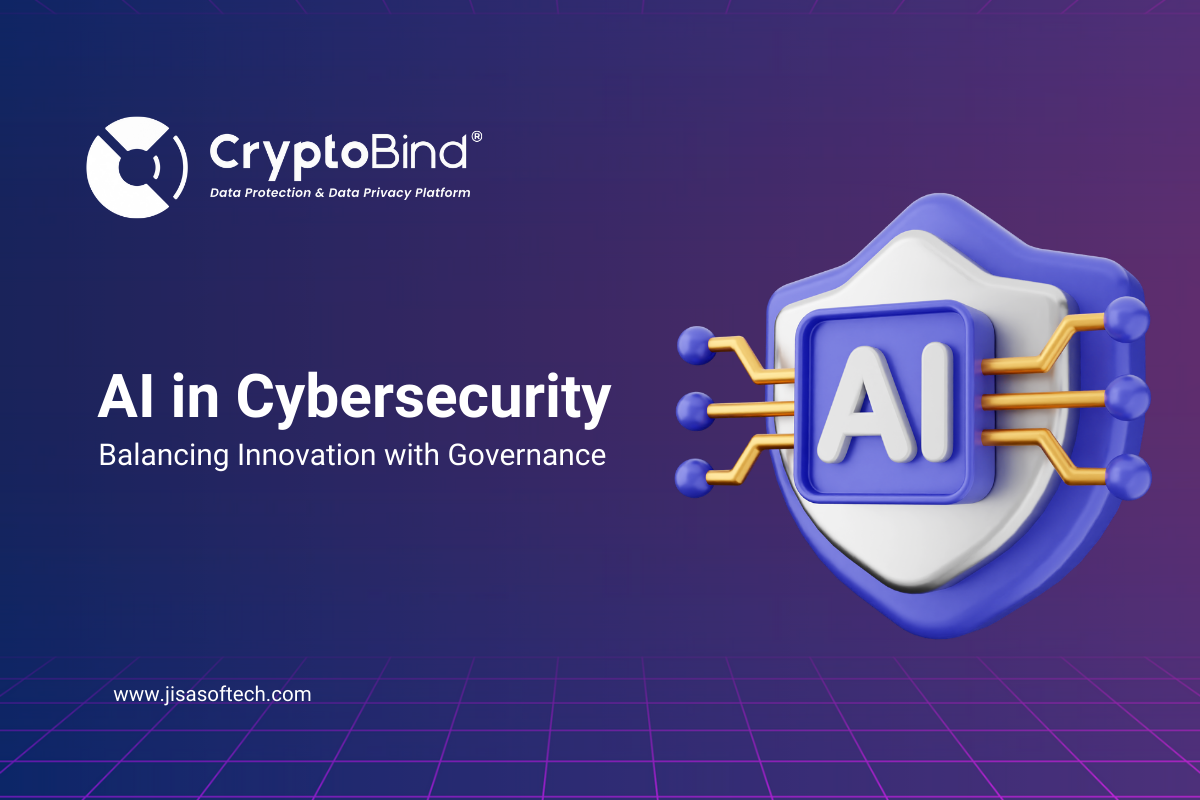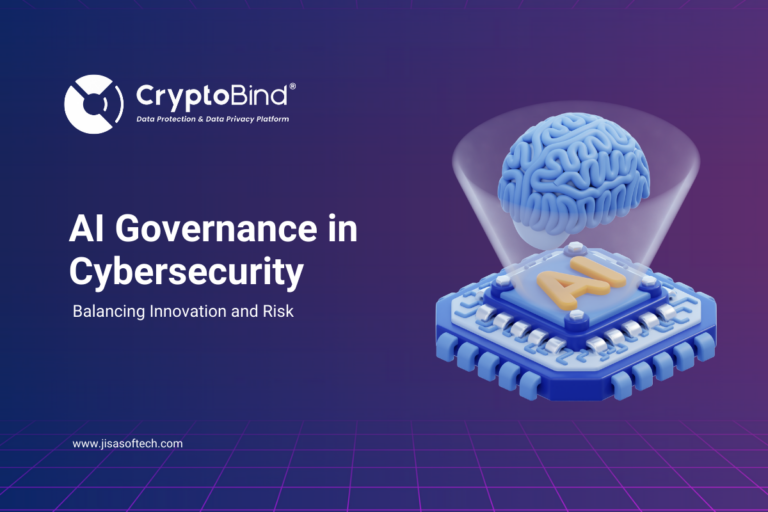AI in Cybersecurity: Balancing Innovation with Governance
As cyberattacks become more sophisticated, businesses must leverage advanced technologies to stay ahead of bad actors. Enter Artificial Intelligence (AI) – a transformative force that has revolutionized how organizations detect, manage, and respond to cyber threats. AI-driven cybersecurity solutions offer faster threat detection, automated responses, and predictive analytics, allowing businesses to strengthen their security posture. However, while AI offers immense advantages, it also raises critical concerns about governance, compliance, and ethical implications.
Understanding AI in Cybersecurity
AI in cybersecurity integrates machine learning (ML), deep learning, and neural networks into security frameworks. These technologies analyze vast amounts of data, recognize patterns, and adapt to evolving threats with minimal human intervention. Unlike traditional security tools that rely on predefined rules, AI-powered systems continuously learn from experience, making them more adept at identifying both known and unknown threats.
AI in cybersecurity can be categorized into three stages:
- Assisted Intelligence – Enhances existing security measures and speeds up decision-making.
- Augmented Intelligence – Provides security analysts with deeper insights and automates threat detection.
- Autonomous Intelligence – The future of cybersecurity, where AI-driven systems act independently to prevent, detect, and mitigate threats in real-time.
Why AI is Essential for Cybersecurity
The cybersecurity landscape is growing more complex due to an increase in attack vectors and regulatory requirements. AI addresses these challenges by:
- Enhancing threat detection: AI analyzes massive datasets in real-time to detect anomalies and potential cyberattacks.
- Automating routine security tasks: AI reduces the burden on security teams by automating processes such as log analysis, intrusion detection, and vulnerability scanning.
- Predicting future threats: AI-driven systems can recognize attack patterns and anticipate emerging cyber risks.
- Improving response time: AI-powered security systems can instantly respond to threats, minimizing damage and improving resilience.
The Good: AI’s Role in Strengthening Cybersecurity
AI is revolutionizing cybersecurity by improving threat detection, automating security processes, and enabling real-time responses. Here are some of the key benefits:
1. Enhanced Threat Detection
AI-driven security systems analyze vast datasets to identify anomalies and potential threats in real time. Machine learning models continuously adapt to emerging attack patterns, ensuring proactive defense.
2. Automation and Efficiency
AI automates routine security tasks, such as malware detection and network monitoring, freeing up cybersecurity professionals to focus on more complex security challenges.
3. Real-time Incident Response
AI enables organizations to respond instantly to cyber threats by automatically isolating compromised systems, blocking malicious traffic, and deploying countermeasures to minimize damage.
4. Predictive Security Analytics
AI analyzes historical attack data to predict potential cyber threats. This proactive approach allows businesses to strengthen security protocols before vulnerabilities are exploited.
The Dark Side: AI-Powered Cyber Threats
While AI enhances cybersecurity, it also empowers adversaries to launch more sophisticated and targeted attacks. Some of the critical risks include:
1. AI-driven Cyberattacks
Cybercriminals use AI to create adaptive malware, automate phishing campaigns, and generate deepfake content for fraud. AI-powered bots can mimic legitimate user behavior, making detection challenging.
2. Bias and Ethical Concerns
AI algorithms trained on biased datasets can result in discriminatory decision-making, leaving specific individuals or organizations more vulnerable to cyberattacks.
3. Unintended Security Risks
Poorly designed AI systems can introduce new vulnerabilities, amplifying cybersecurity risks rather than mitigating them. Misconfigurations or false positives may lead to operational disruptions.
AI and Cybersecurity Compliance
With regulatory frameworks such as DPDP ACT, GDPR, HIPAA, PCI-DSS, and ISO 27001 becoming more stringent, organizations must ensure compliance while strengthening security. AI streamlines compliance by:
- Automating compliance audits – AI-driven systems can assess security logs and generate reports to ensure regulatory adherence.
- Monitoring access controls – AI helps enforce security policies by monitoring unauthorized access attempts.
- Risk assessment and management – AI evaluates security risks, ensuring organizations remain compliant with industry standards.
A recent report states that 67% of businesses struggle with cybersecurity due to a lack of skilled professionals. AI bridges this gap by automating compliance tasks and enabling organizations to maintain regulatory adherence with minimal effort.
Navigating the AI Landscape: Responsible Implementation and AI Governance
To balance innovation with governance, businesses must adopt ethical AI practices and regulatory oversight. AI governance provides essential guidance to organizations, ensuring that AI initiatives align with regulatory standards and ethical considerations. Implementing AI governance as an oversight framework helps organizations continually monitor AI operations against policy boundaries for regulation, privacy, safety, and risk.
Objectives of AI Governance
Establishing alignment between business objectives and AI strategy, determining responsibilities, streamlining processes with automation, and providing data stakeholders with governed ways of working helps companies unlock faster time to business value.
Core Values and Principles for Responsible AI Governance
To ensure ethical and responsible AI implementation, organizations must adhere to key principles:
1. Fairness and Bias Mitigation
Creating AI systems that operate impartially and equitably, ensuring they do not propagate biases.
2. Transparency and Explainability
Making AI systems understandable, accessible, and open to scrutiny to demystify AI technologies.
3. Privacy and Data Protection
Safeguarding individuals’ personal information and ensuring that AI systems operate within legal and ethical boundaries.
4. Accountability and Governance
Ensuring that AI systems and their outcomes are the responsibility of identifiable individuals or organizations through clear roles, documentation, and oversight mechanisms.
5. Safety and Security
Operating AI reliably and preventing unauthorized access, breaches, or misuse, maintaining confidentiality and integrity.
6. Societal Impact
Assessing and managing the broader effects of AI systems on society, ensuring that these technologies lead to positive social, economic, and cultural implications.
It’s critical for organizations to find the right balance between scaling digital businesses with AI-powered innovation while ensuring results are predictable, reliable, and aligned with the organization’s values. Establishing these principles as guidance for developing and deploying AI drives reliable, value-aligned outcomes.
Governance and Ethical Challenges of AI in Cybersecurity
Despite its benefits, AI in cybersecurity presents several governance challenges, including:
- Bias in AI algorithms: If not properly trained, AI models may exhibit biases, leading to incorrect threat assessments.
- Lack of transparency: AI-powered security decisions often rely on complex algorithms, making it difficult to understand how threats are classified and mitigated.
- Privacy concerns: AI systems process vast amounts of sensitive data, raising concerns about data privacy and ethical use.
- Over-reliance on AI: While AI enhances security, human oversight remains crucial to ensure responsible implementation.
To address these challenges, organizations must establish AI governance frameworks, ensuring ethical AI deployment and compliance with global regulations.
Future of AI in Cybersecurity
The future of AI-driven cybersecurity lies in:
- Post-Quantum Cryptography: AI will play a key role in developing encryption techniques resilient to quantum computing threats.
- AI-powered deception technology: Advanced systems will use AI to mislead attackers and gather intelligence on cyber threats.
- Explainable AI (XAI): Efforts to make AI-driven security decisions more transparent and interpretable will gain traction.
- AI-augmented cybersecurity teams: AI will complement human analysts, enhancing threat intelligence and response capabilities.
Conclusion
AI is a game-changer in cybersecurity, offering enhanced threat detection, automated incident response, and compliance management. However, balancing innovation with governance is critical to ensuring ethical, transparent, and responsible AI deployment. By adopting AI-driven security solutions while implementing robust governance frameworks, organizations can stay ahead of cyber threats and build a secure digital future.
Secure your digital future now! Contact us today to discover how CryptoBind Solutions can transform your cybersecurity strategy in the AI era. Don’t wait—stay ahead of evolving threats with cutting-edge security solutions!
Read more on the latest in cybersecurity and data protection:
AI Governance in Cybersecurity: Balancing Innovation and Risk



